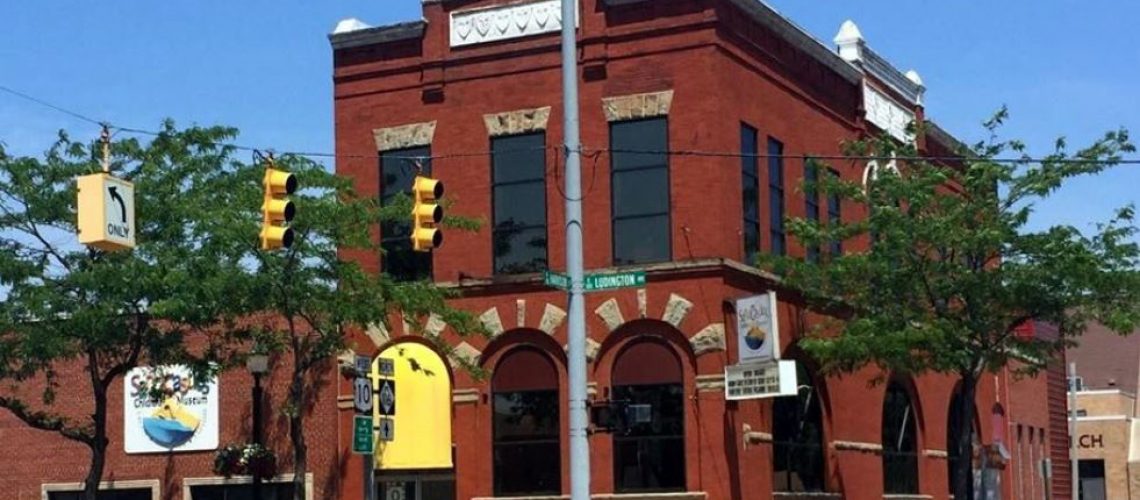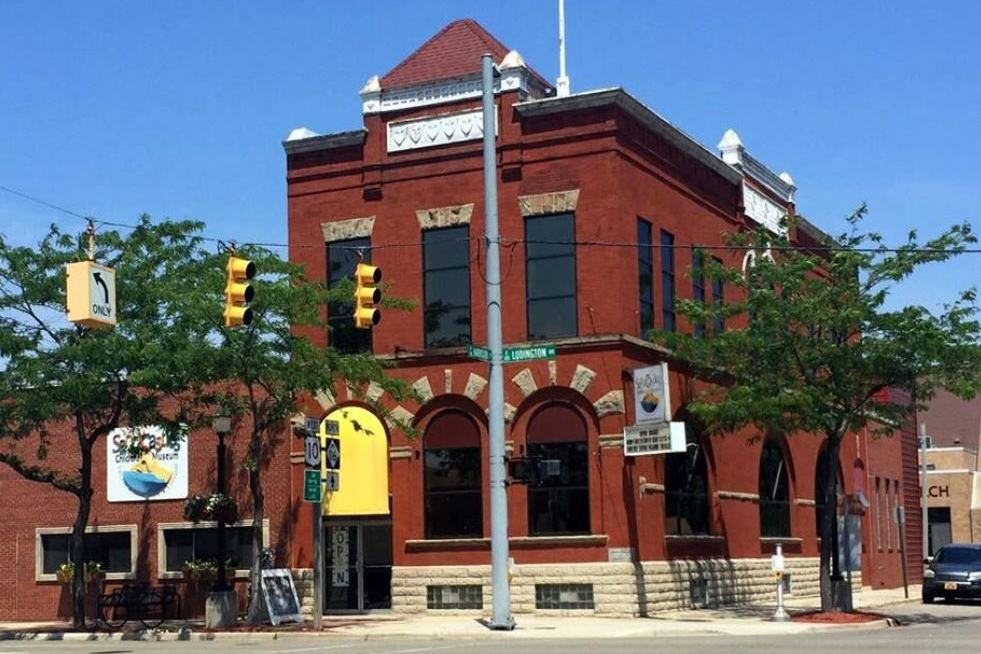 Non-profit organizations are at the heart of our local communities. They work tirelessly to provide services and offerings for one sole purpose: to enrich and support the people in the community. But they often also depend largely on funding from outside sources, and when times become uncertain, they can be the first ones hit on incoming revenue. You can support non-profits in your area by simply rounding up your electric bill to the nearest dollar through Great Lakes Energy’s People Fund. To contribute your small change to change your community for the better, enroll here.
Non-profit organizations are at the heart of our local communities. They work tirelessly to provide services and offerings for one sole purpose: to enrich and support the people in the community. But they often also depend largely on funding from outside sources, and when times become uncertain, they can be the first ones hit on incoming revenue. You can support non-profits in your area by simply rounding up your electric bill to the nearest dollar through Great Lakes Energy’s People Fund. To contribute your small change to change your community for the better, enroll here.
Sandcastles Children’s Museum in downtown Ludington provides an abundance of interactive learning experiences for children and their families. That’s what museums do. But Sandcastles takes it a step further: they connect people and they’ve continued to do so even while we all practice social distancing.
Director Kristen Korendyke explains how exhibits spread over the museum’s three floors are designed to give kids confidence to learn by doing through creative free play. At the same time, Sandcastles’ exhibits provide learning experiences that draw in family and friends to make lasting memories.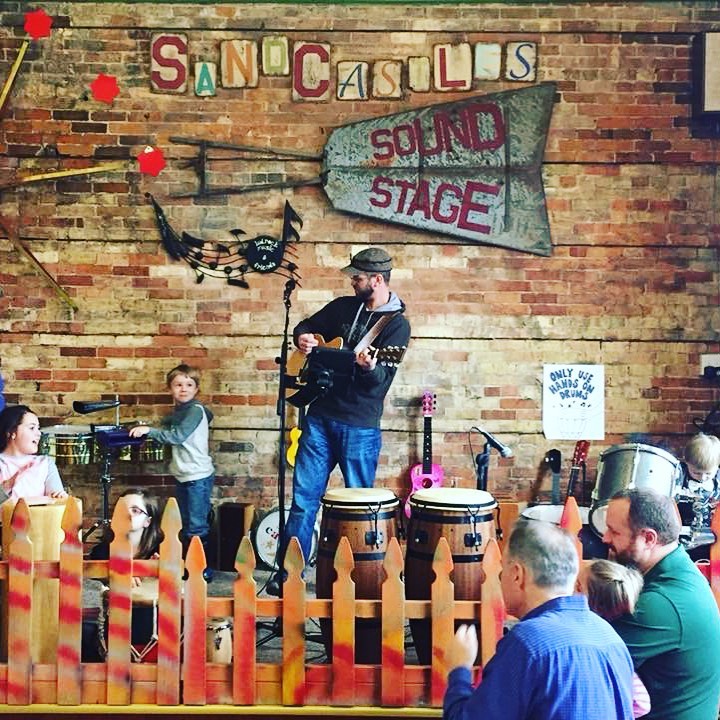
Since the museum has closed its doors to adhere to the state mandates for social distancing, they’ve been able to take the concept of creative free play that they encourage in their museum and translate it virtually through social media. Resources such as videos and posts about crafts and activities posted daily to their Facebook page are ways they have given back to the community to make sure children and their families can still connect. They hope to add weekly puppet shows for kids to watch on Facebook in April.
“There’s nothing more rewarding than to watch the interaction between the kids and their significant adults,” Korendyke states.
Grants Provide Help
Over the years, grants have played a big part in Sandcastles’ success and growth. In the face of revenue anxiety due to COVID-19 for Sandcastles and many other nonprofit organizations that serve the communities we live in, the role grants play in their survival becomes more important than ever.
“Grants have helped us renovate our building, build new resources, and pay for programs we offer,” explains Korendyke. The museum has received several GLE People Fund grants* over the years and is applying this spring for a grant to purchase small drones and fund three summer instructional classes on flying them.
“We are grateful for the support of projects made possible over the years with People Fund grants from Great Lakes Energy,” Korendyke says.
(* NOTE: Applications are due April 15 for the first round of 2020 People Fund grants to nonprofit charitable and community organizations. Request a grant application here.)
Sandcastles History
The museum turns 14 years old in 2020. Korendyke explains it started in 800 square feet of “borrowed” space and saw 1,500 visitors its first year. Its fourth year, Sandcastles drew 15,000 visitors.
“We knew we needed to find a home of our own,” remembers Korendyke. They were able to purchase a former Elks building in downtown Ludington in 2010 and began renovating to maximize exhibit flow throughout the building’s three floors—a slow process that was finally completed last winter.
So Much To Do!
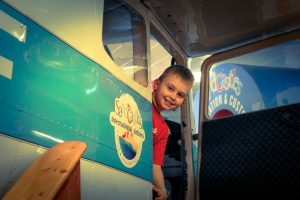 In addition to some displays made for outside use, the museum offers more than 40 interactive exhibits throughout its three floors. The biggest and one of the favorites? An actual Cessna airplane, complete with a control tower. Children can pilot the plane or act as a control tower navigator.
In addition to some displays made for outside use, the museum offers more than 40 interactive exhibits throughout its three floors. The biggest and one of the favorites? An actual Cessna airplane, complete with a control tower. Children can pilot the plane or act as a control tower navigator. 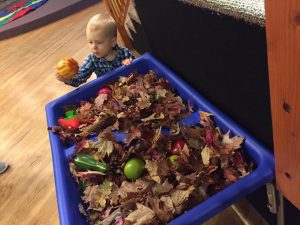 A close second favorite is the smaller model of the popular Badger cross-lake car ferry that docks in Ludington. Kids visiting that exhibit can choose to pilot the ship in a simulated lake crossing or “work” by helping park cars on the ferry.
A close second favorite is the smaller model of the popular Badger cross-lake car ferry that docks in Ludington. Kids visiting that exhibit can choose to pilot the ship in a simulated lake crossing or “work” by helping park cars on the ferry.
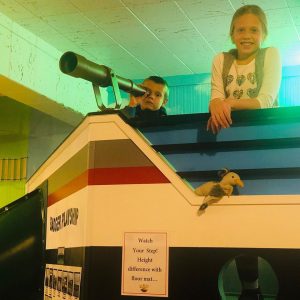 Other interactive exhibits include a pseudo construction site, farm, grocery store, pizza parlor, animal hospital where kids can help bandage stuffed animals, post office, bank, and sound stage complete with instruments, microphones and a video screen. The latest exhibit is one that promotes water safety and teaches about wave patterns, rip currents, and how to keep yourself and those around you in the water safe.
Other interactive exhibits include a pseudo construction site, farm, grocery store, pizza parlor, animal hospital where kids can help bandage stuffed animals, post office, bank, and sound stage complete with instruments, microphones and a video screen. The latest exhibit is one that promotes water safety and teaches about wave patterns, rip currents, and how to keep yourself and those around you in the water safe.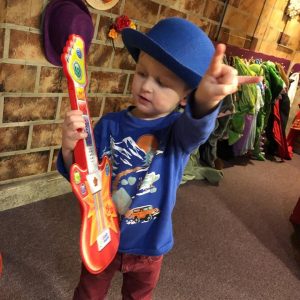
Volunteers, Korendyke acknowledges, contribute to Sandcastles’ success. Some have been with the museum from the beginning. The organization also has a volunteer board of directors.
“Many of our new volunteers, though, are former visitors who fell in love with Sandcastles’ mission to connect people and want to be part of that,” Korendyke adds.
Volunteers take on duties working at the many exhibits. Discovery Guides (students grades 5-8 who volunteer once a week in the summer) take particular pride in their roles. Sandcastles also partners with Ludington High School Horizons program to put developmentally disabled young adult students to work cleaning and tackling other tasks. In addition, Community Mental Health of Mason County sends volunteers bi-weekly to clean, sanitize, and “keep things orderly.”
Korendyke reports admission ($7 per person, free for those one or younger) as Sandcastles’ biggest revenue source. Frequent visitors can purchase memberships for $100/year (two adults and four children). Hours once the museum re-opens will be 9:30 a.m. to 5 p.m. Monday through Saturday and noon to 4 p.m. on Sunday.
With continued support of its patrons during this challenging period and a little more help from such sources as People Fund grants, Sandcastles will remain a source of learning, delight and connection in its community for years to come.

